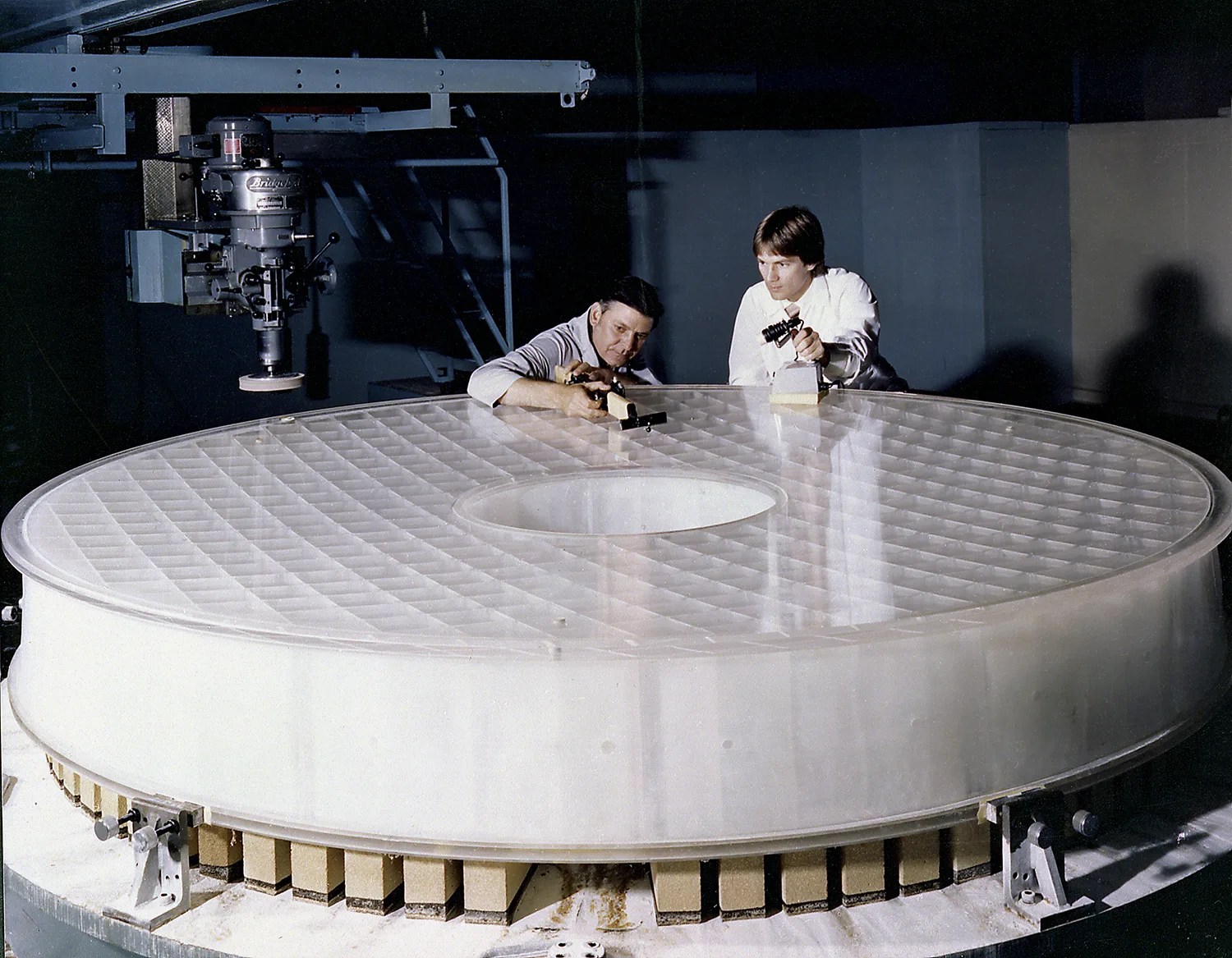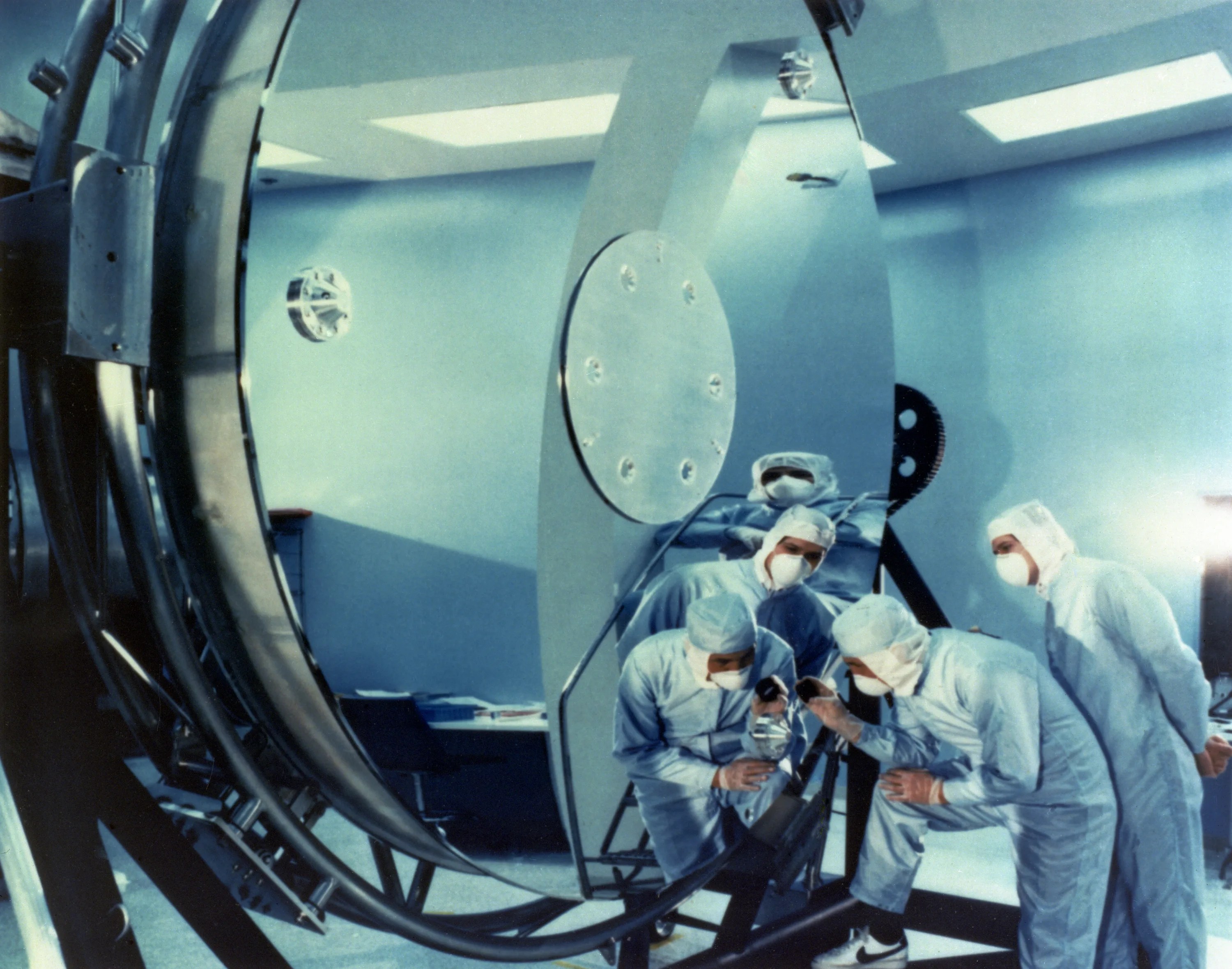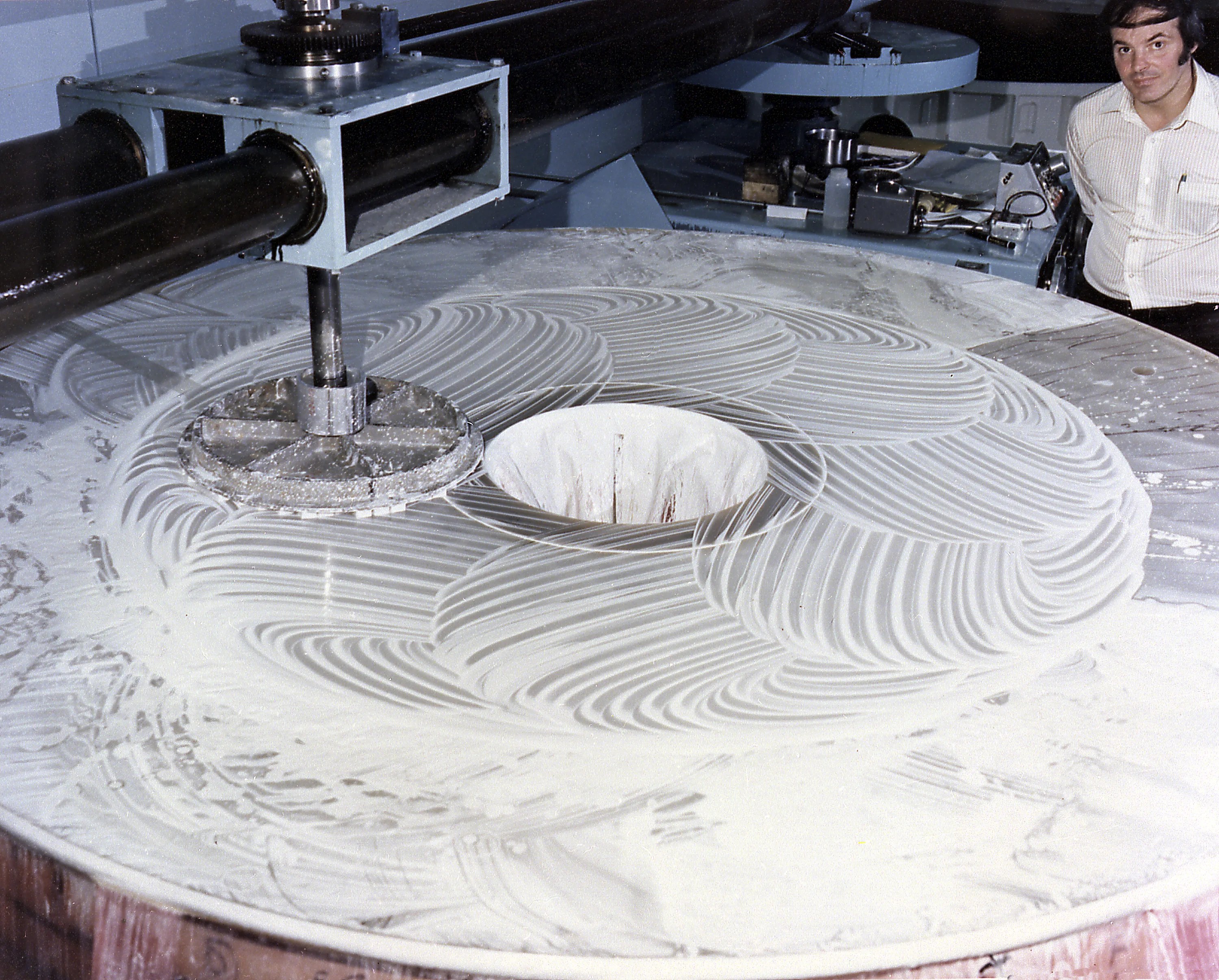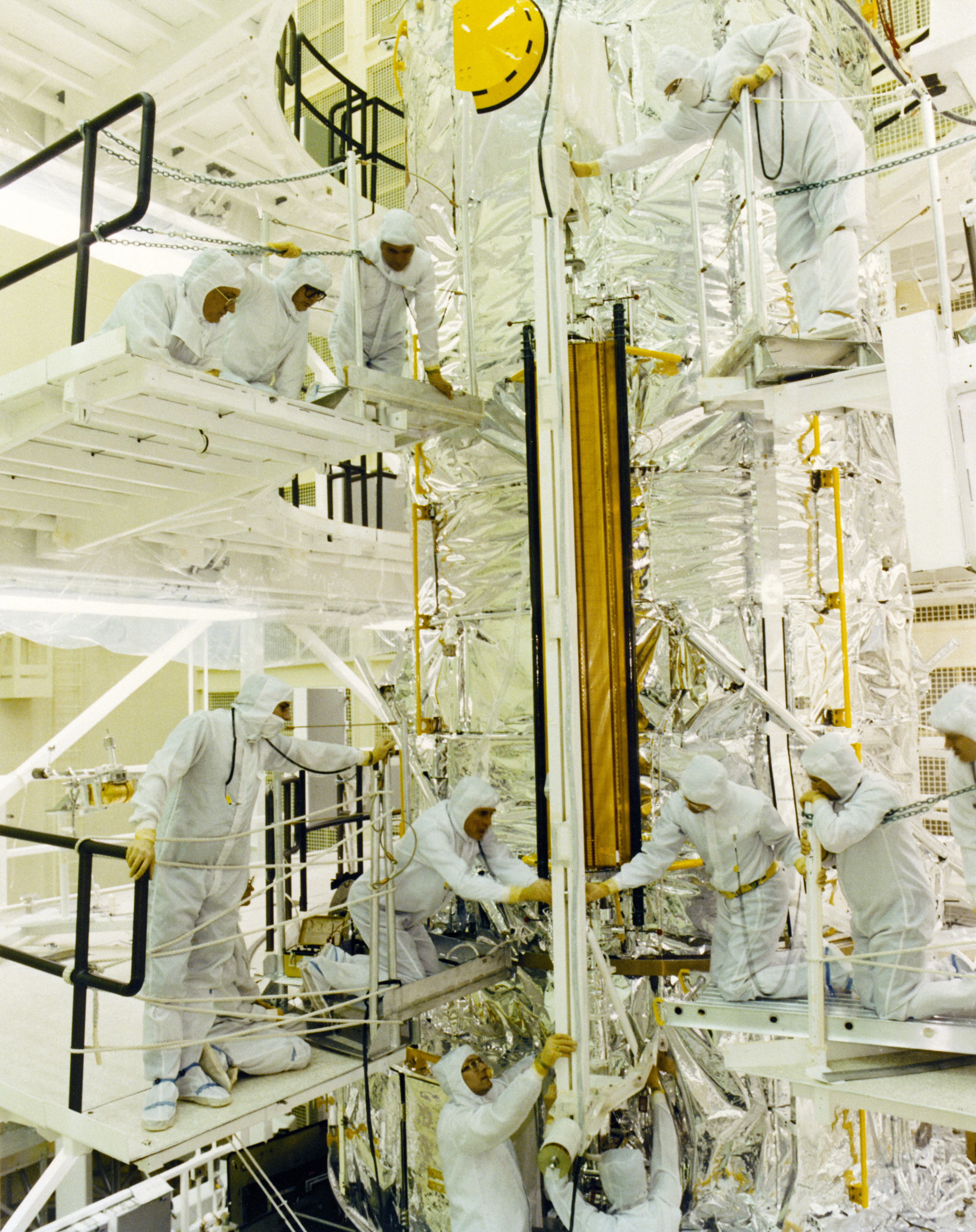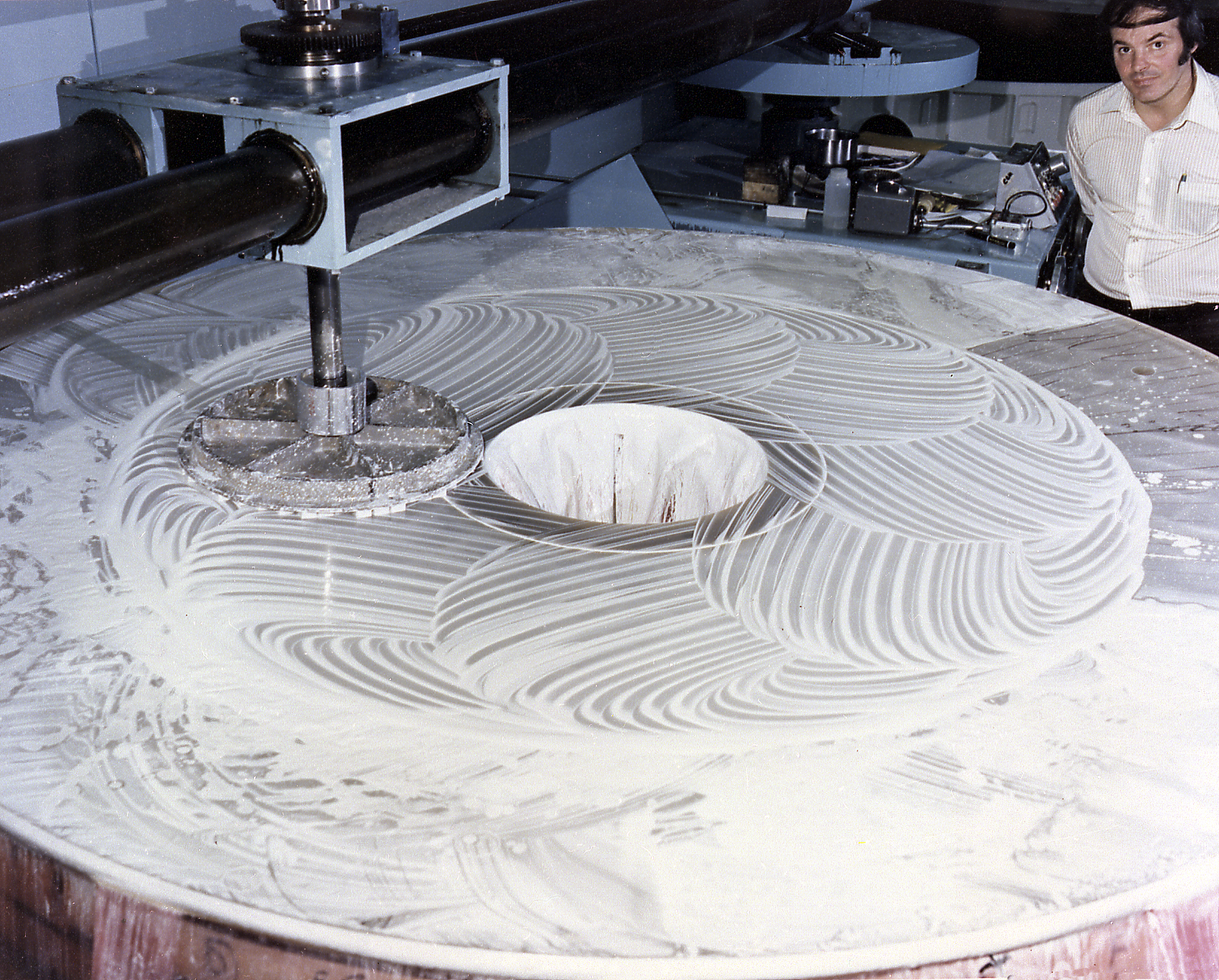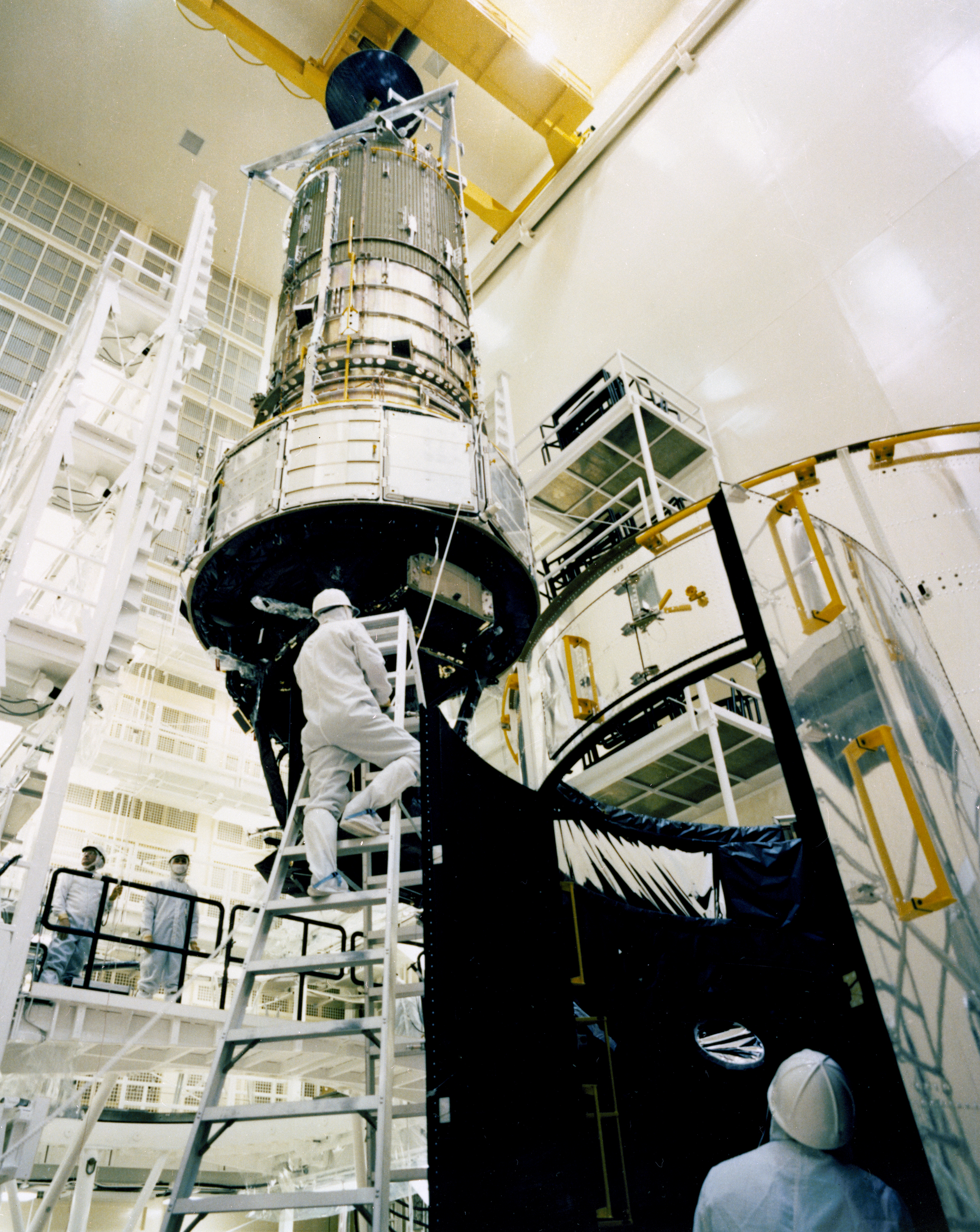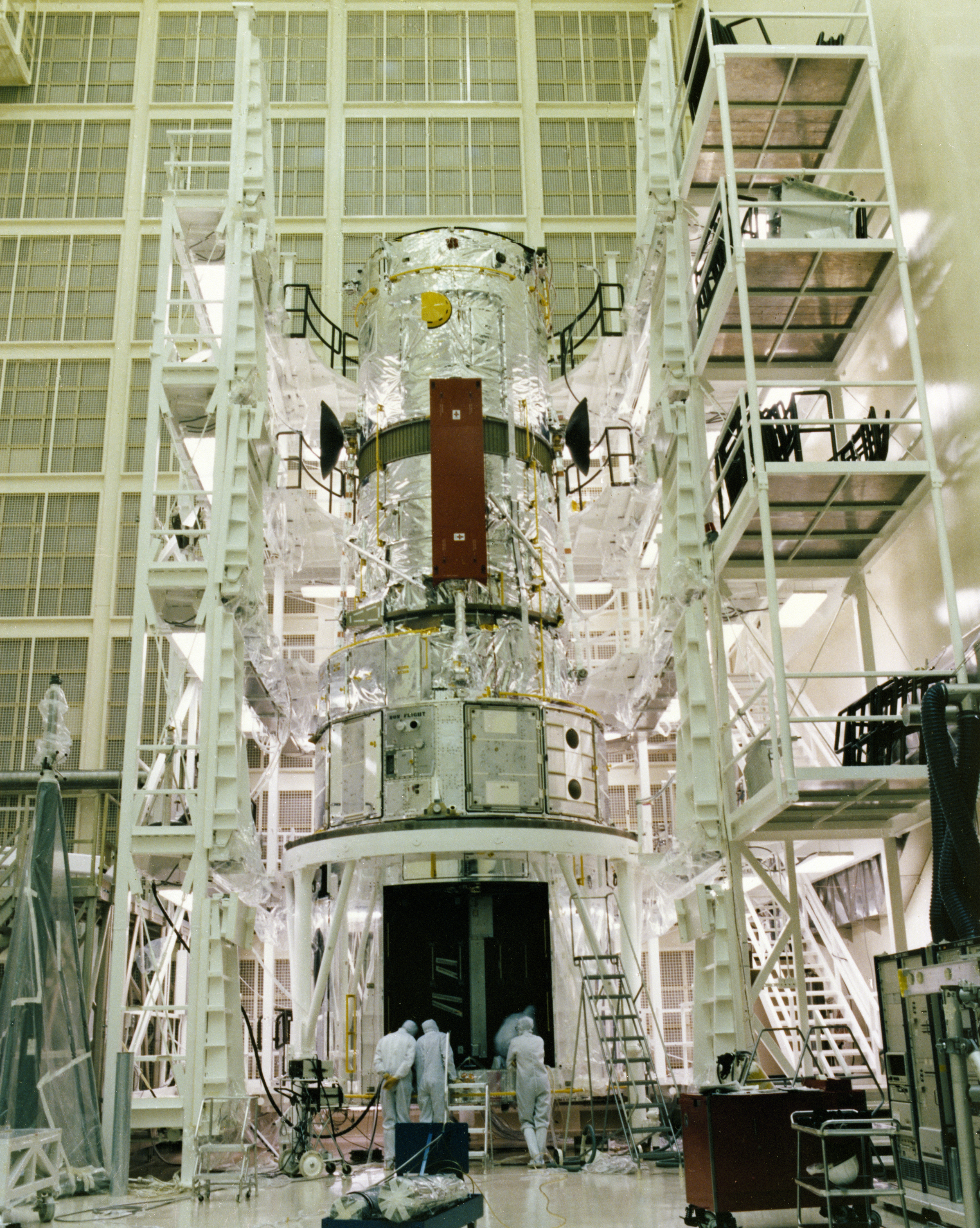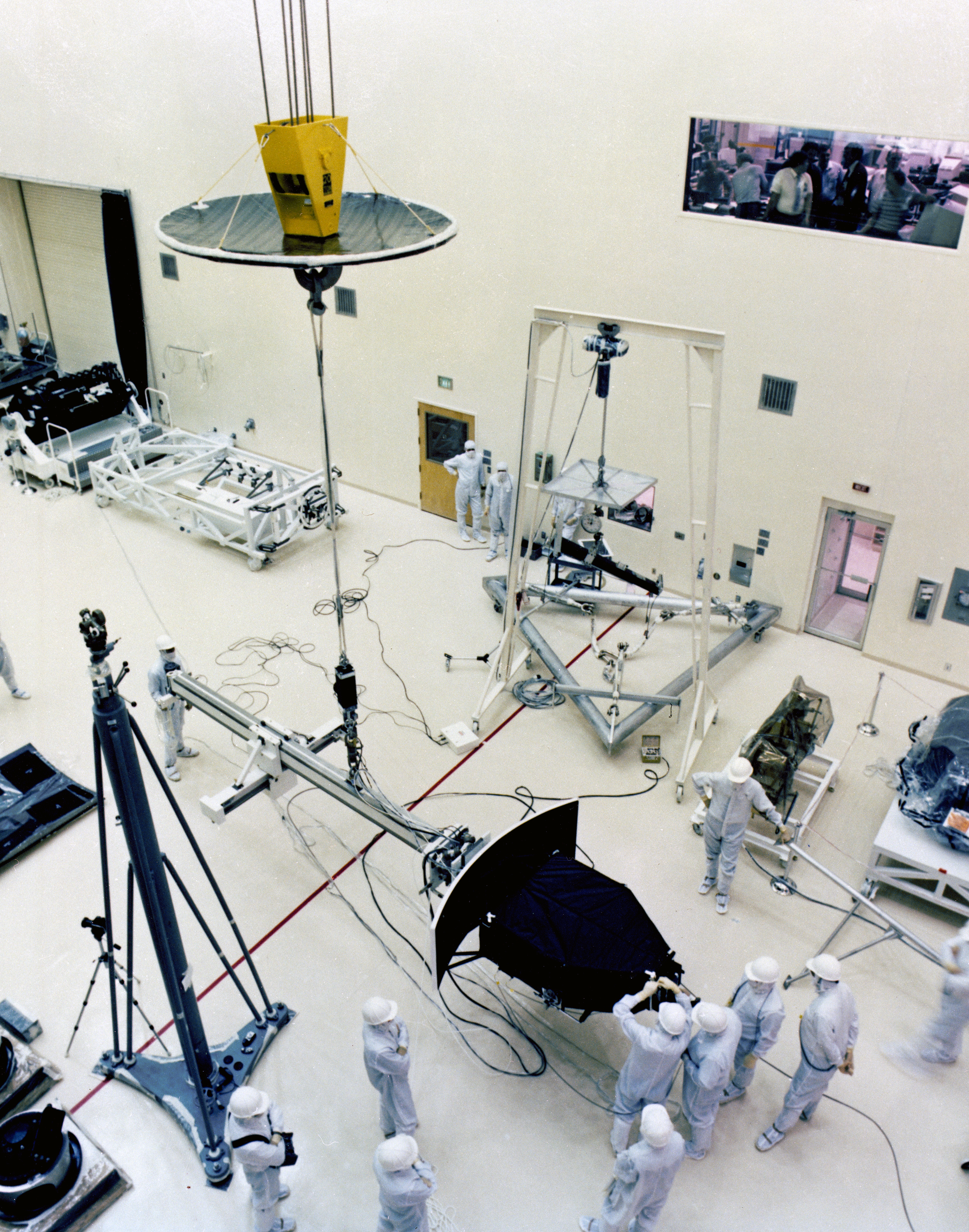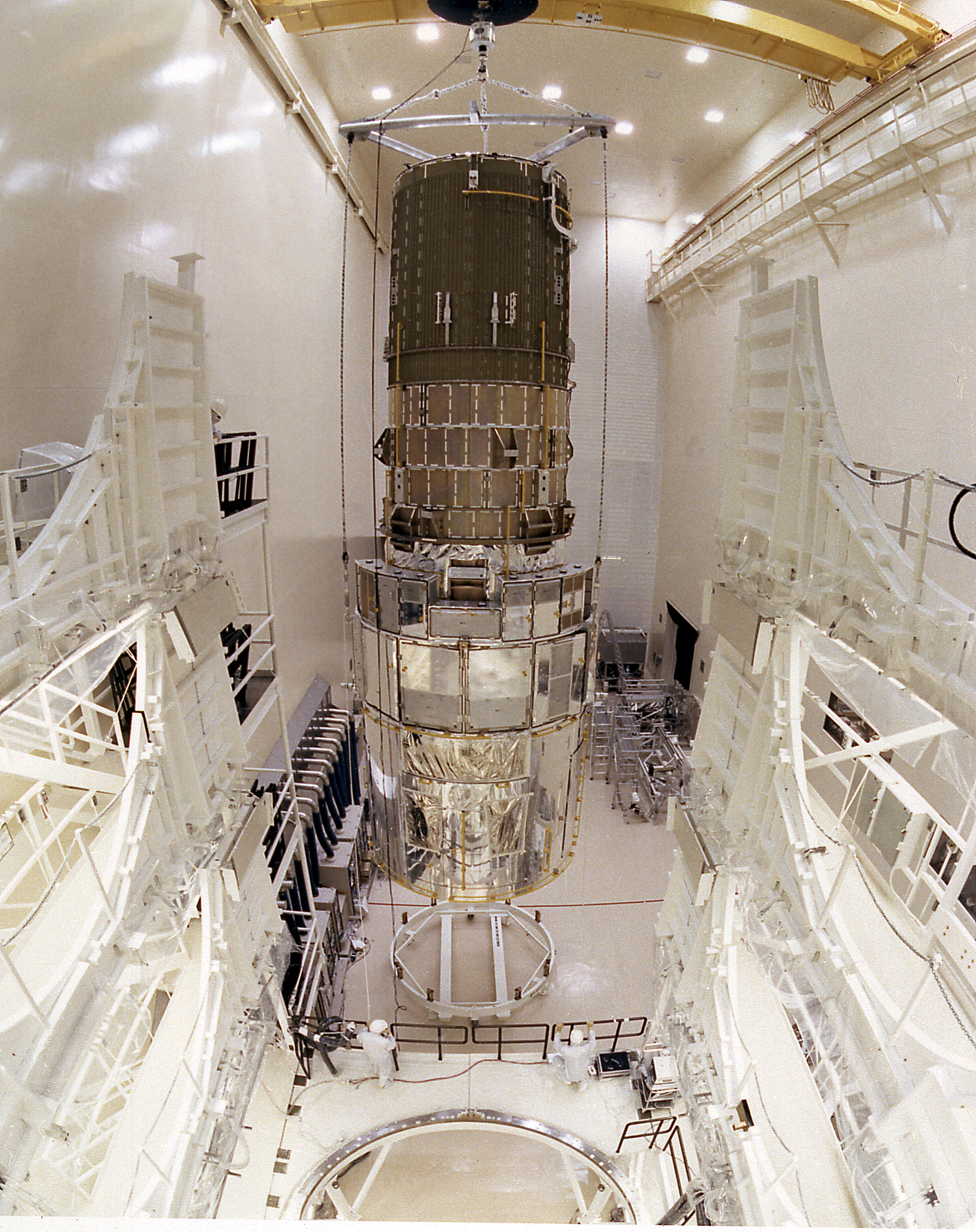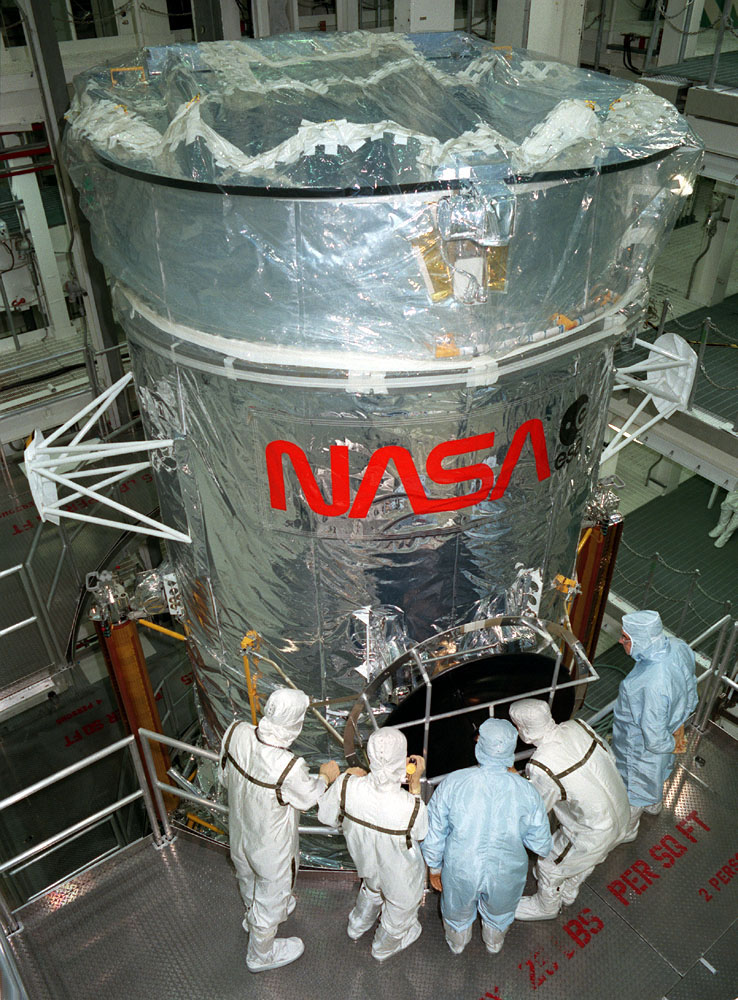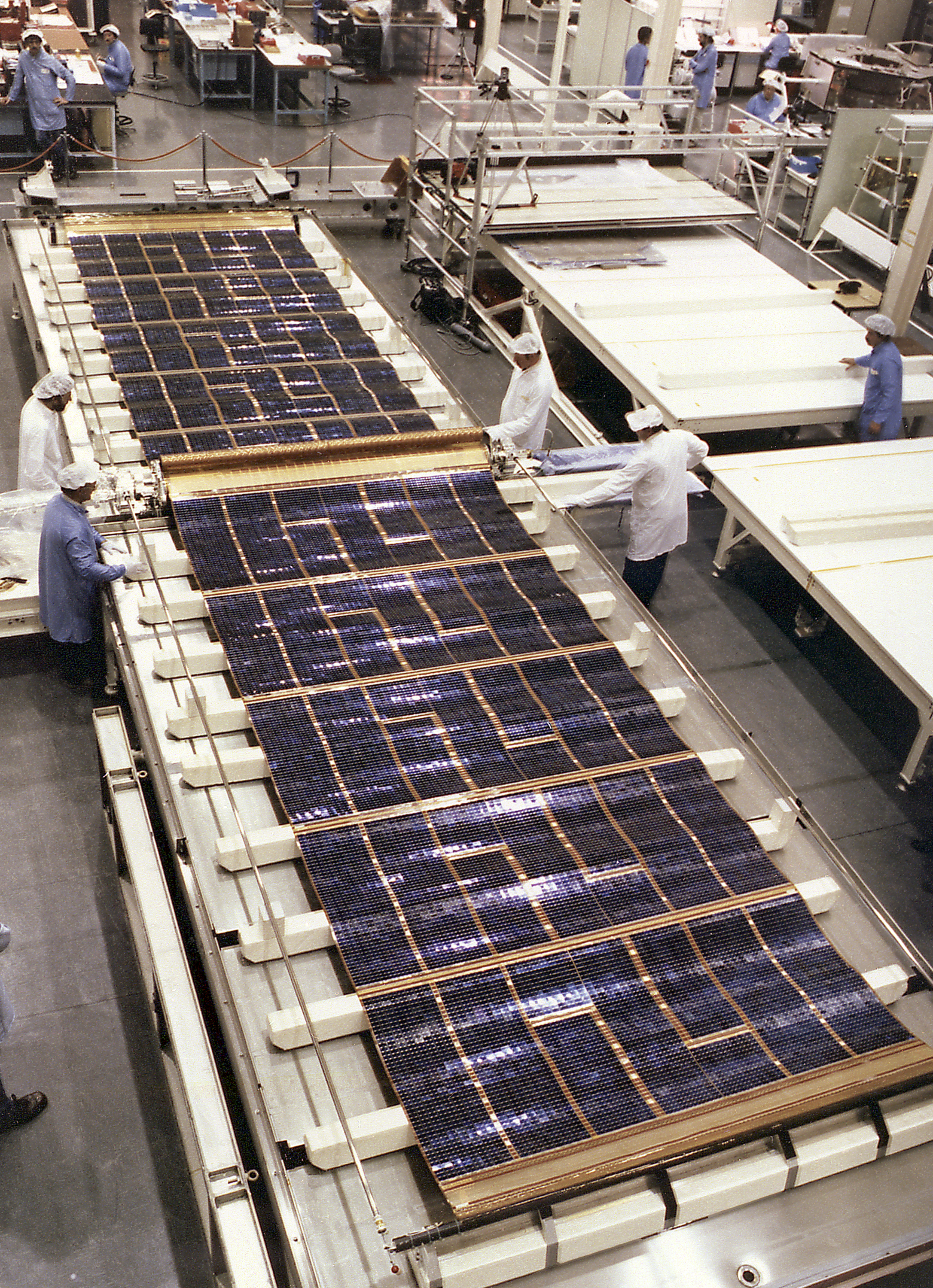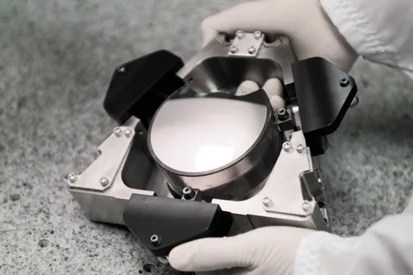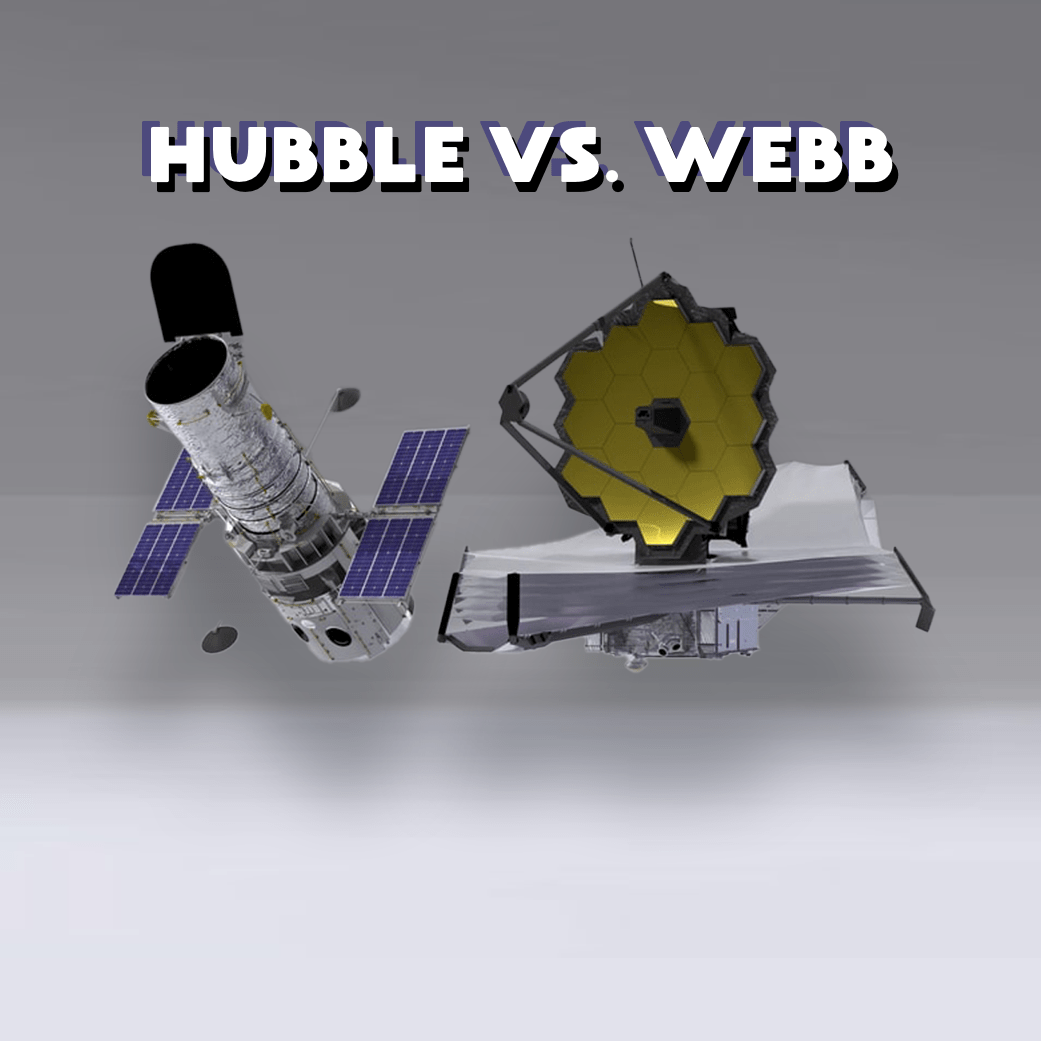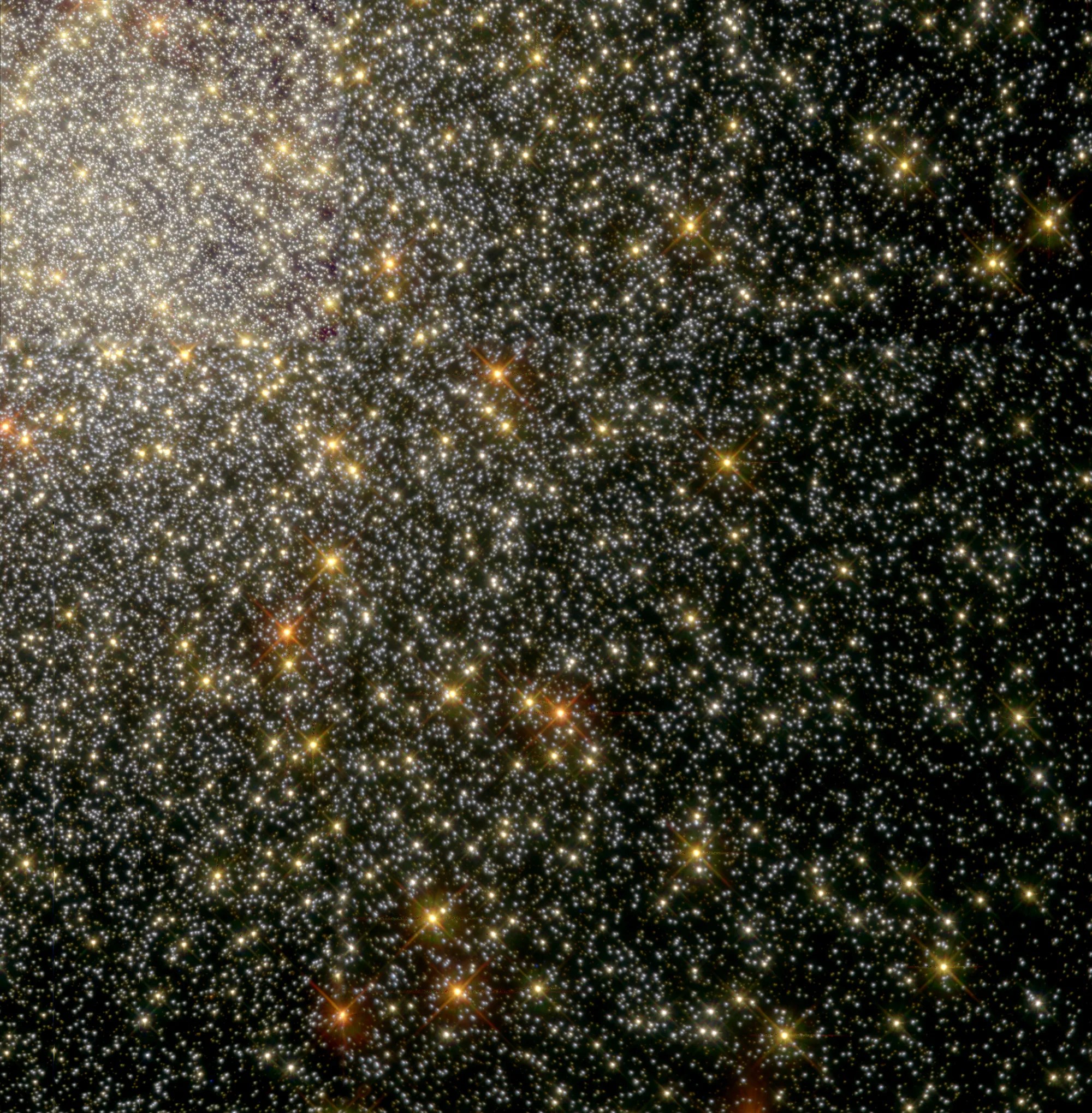Optics
Hubble’s light-gathering ability lies in its 1,825-pound (828-kilogram), 7.9-foot (2.4-meter) diameter primary mirror.
Quick Facts
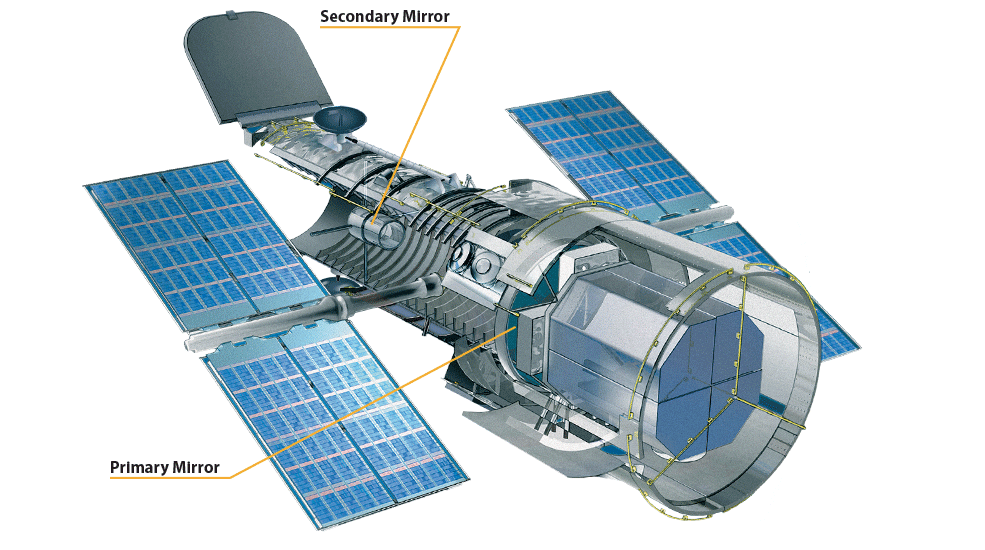
The Hubble Space Telescope’s mirror-based optical system collects and focuses light from the universe to be analyzed by science and guidance instruments. The optical system, called the Optical Telescope Assembly (OTA), gives Hubble a unique view of the universe by gathering infrared, visible and ultraviolet light.
The OTA is supported by a graphite epoxy skeleton. Found in golf clubs, bicycles and tennis rackets, graphite epoxy was chosen for the frame of the OTA because it is lightweight, stiff and strong. Though the frame contracts slightly when water vapor embedded within it escapes into space, the graphite epoxy is resistant to expansion and contraction caused by the extreme temperature fluctuations that Hubble experiences as it orbits Earth. Temperature fluctuations could also potentially warp Hubble's mirrors, causing its optics to go out of focus. For this reason, the mirrors are kept at a constant temperature of about 70 degrees Fahrenheit (21 degrees Celsius).
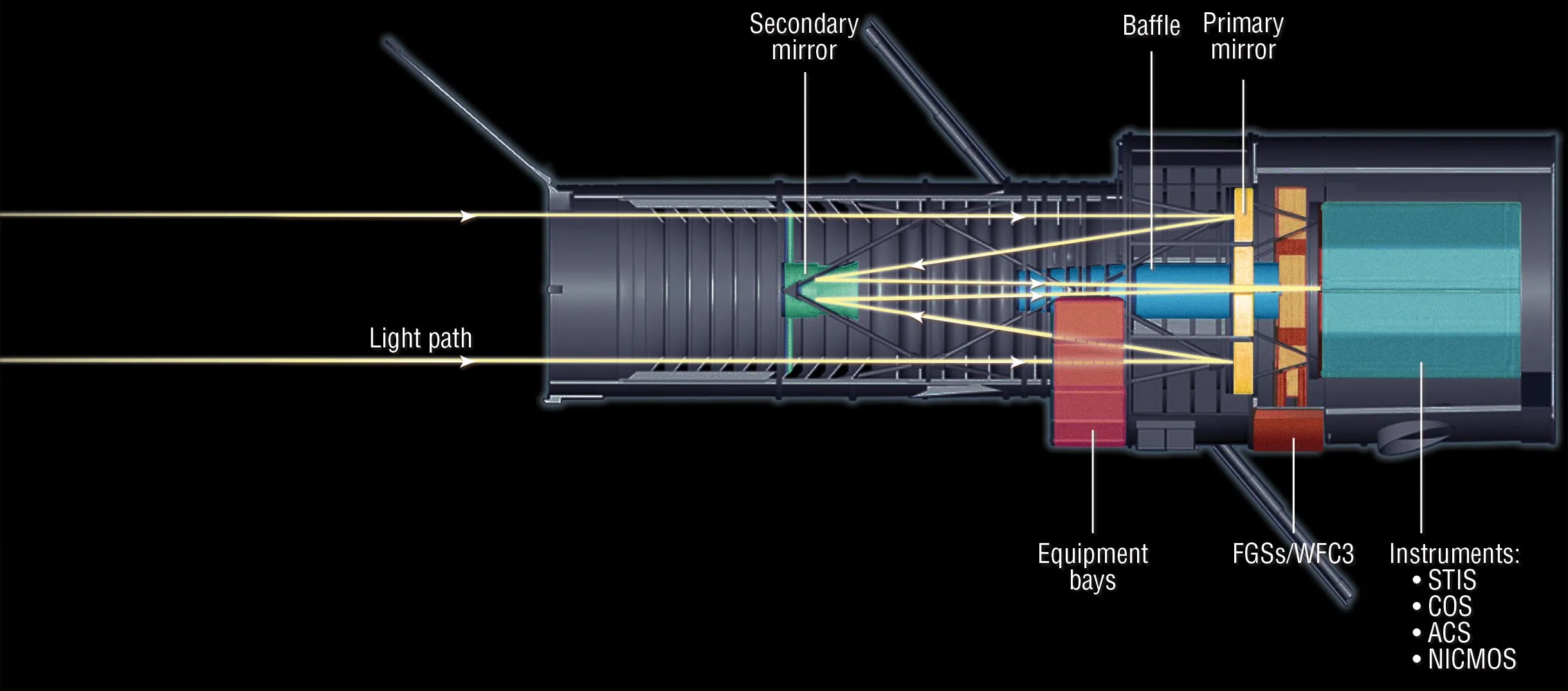
Hubble uses two mirrors, laid out in a Cassegrain telescope design, to collect and focus light. After light travels down the length of the telescope, it hits the concave, or bowl-shaped, primary mirror. The light reflects off of the primary mirror and travels back toward the front of the telescope. There it hits the secondary mirror, which is convex, or dome-shaped. The secondary mirror concentrates the light into a beam the size of a dinner plate that travels back toward and then through a hole in the primary mirror. The light is then directed into science and guidance instruments for analysis.
Hubble’s mirrors are curved hyperbolically, meaning that they have a deeper curve than a standard, parabolic Cassegrain mirror. This variation, called a Ritchey-Chrétien design, provides sharper images over a wider field of view.
The primary mirror is 7.9 feet (2.4 meters) in diameter, while the secondary mirror is only 12 inches (30.5 centimeters) wide. The size of the primary mirror allows it to collect 40,000 times more light than the human eye, meaning that Hubble could see the landing lights of an airplane over San Francisco from Washington, D.C. Though the primary mirror is large, its design makes it as lightweight as possible. Instead of a solid core, Hubble’s primary mirror has a honeycomb interior, reducing its weight from about 8,000 pounds (3,636 kg) to 1,800 pounds (818 kg). Both the primary and secondary mirrors are made of a high-silicon, Ultra-Low Expansion Glass developed by Corning Glass Works.
Both mirrors are coated with thin layers of aluminum and magnesium fluoride. The layer of aluminum is only 3/1,000,000th of an inch thick and provides the mirror’s reflectivity. The magnesium fluoride layer is coated on top of the aluminum to protect it from oxidation as well as to increase reflectivity of ultraviolet light. The mirrors and the coatings are very smooth. In fact, the primary mirror of Hubble is so smooth that if the mirror were expanded to the diameter of Earth, the largest bumps on the surface would only be six inches (15 cm) tall.
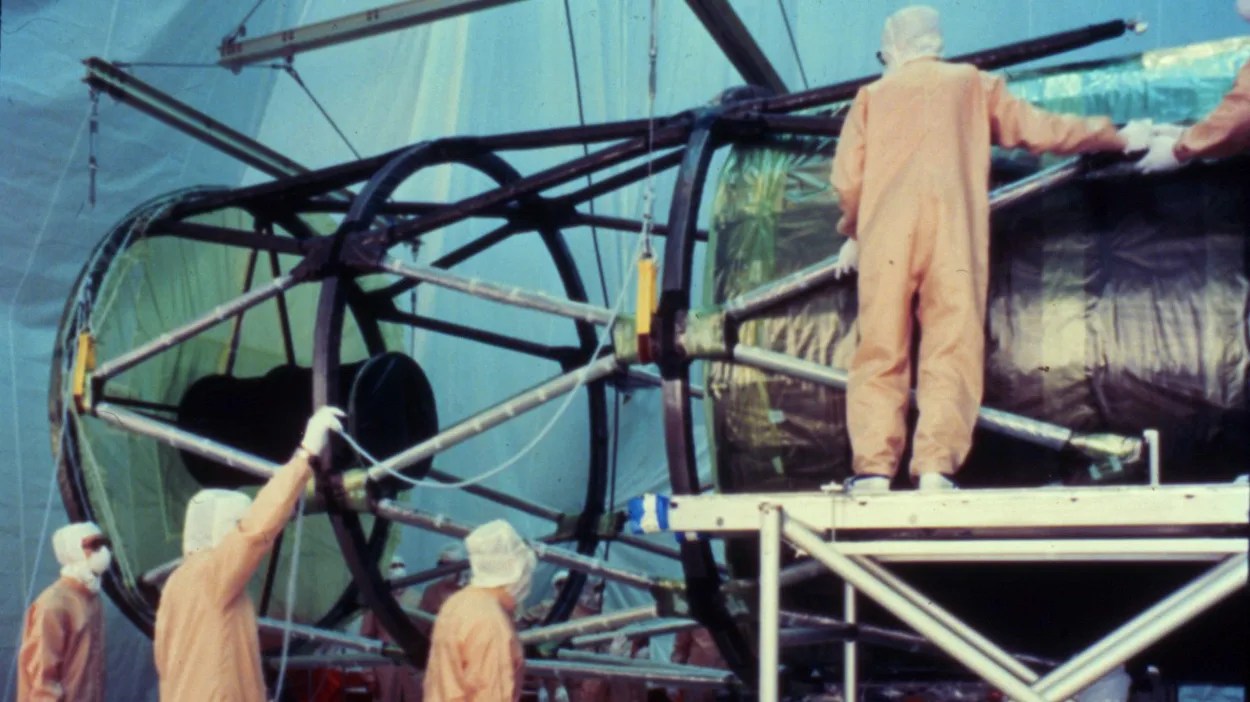
Hubble's Mirror Flaw
Shortly after the Hubble Space Telescope's launch in 1990, scientists and engineers discovered that the observatory's primary mirror had an aberration that affected the clarity of the telescope's early images.
Read More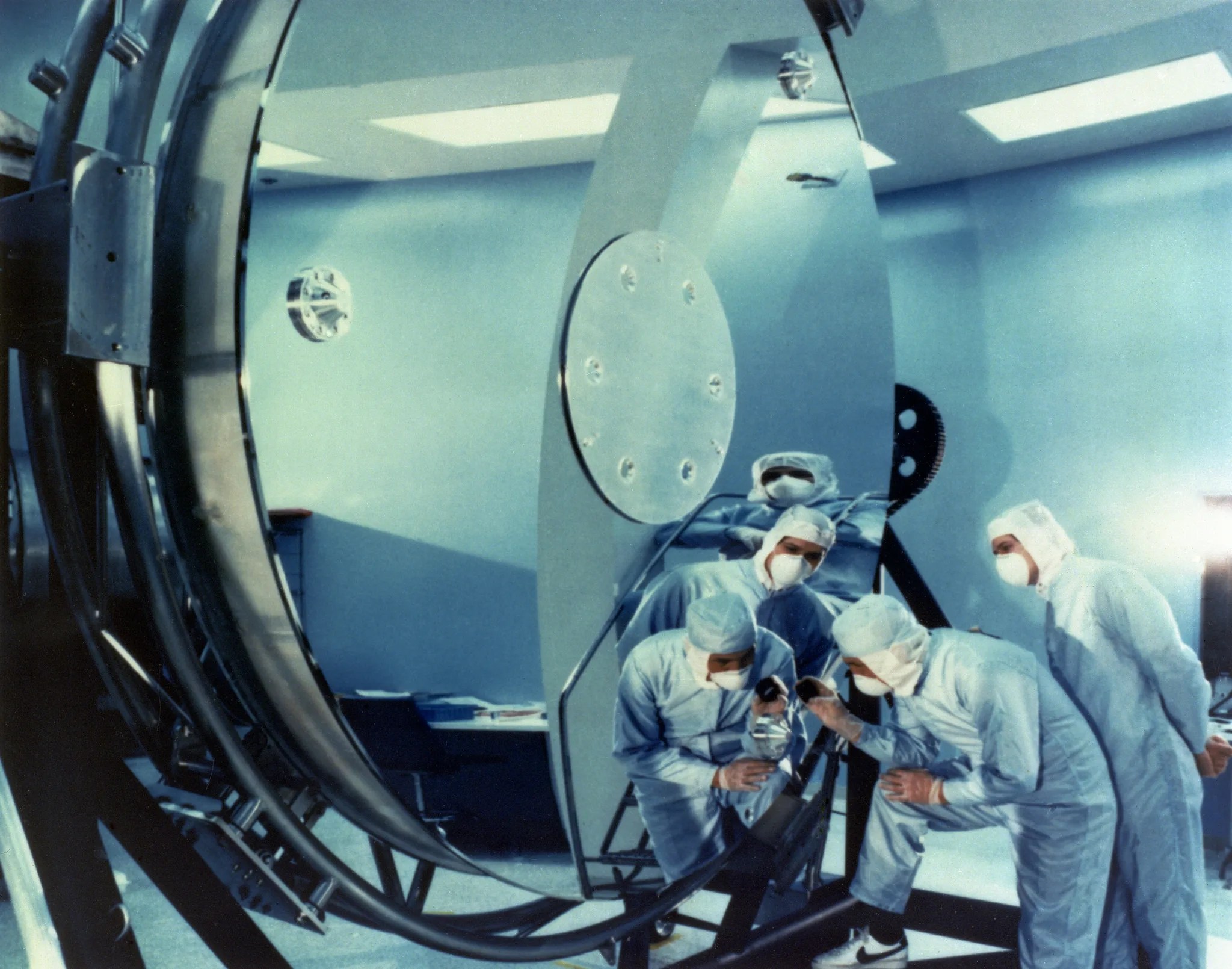
Though Hubble’s primary mirror was ground to the right smoothness, it was not ground to the correct curvature. After Hubble was launched in 1990, NASA discovered that the primary mirror had an error called “spherical aberration.” The curvature of the mirror was off by less than one millionth of a meter — or a mere 1/50th the width of a human hair. But it was enough to leave Hubble’s images slightly blurry compared to what they should have been. Even with the optical error, Hubble was able to perform science observations not possible from the ground.
To remedy the spherical aberration, NASA worked with Ball Aerospace to develop the Corrective Optical Space Telescope Axial Replacement (COSTAR). Installed by astronauts in 1993, COSTAR contained small mirrors on robotic arms that corrected the light beams entering Hubble’s original scientific instruments (except for the Wide Field and Planetary Camera; that instrument was replaced in 1993 with the Wide Field and Planetary Camera 2, which contained its own corrective optics). All future science instruments were designed to account for the error, and COSTAR was eventually removed by astronauts in 2009.
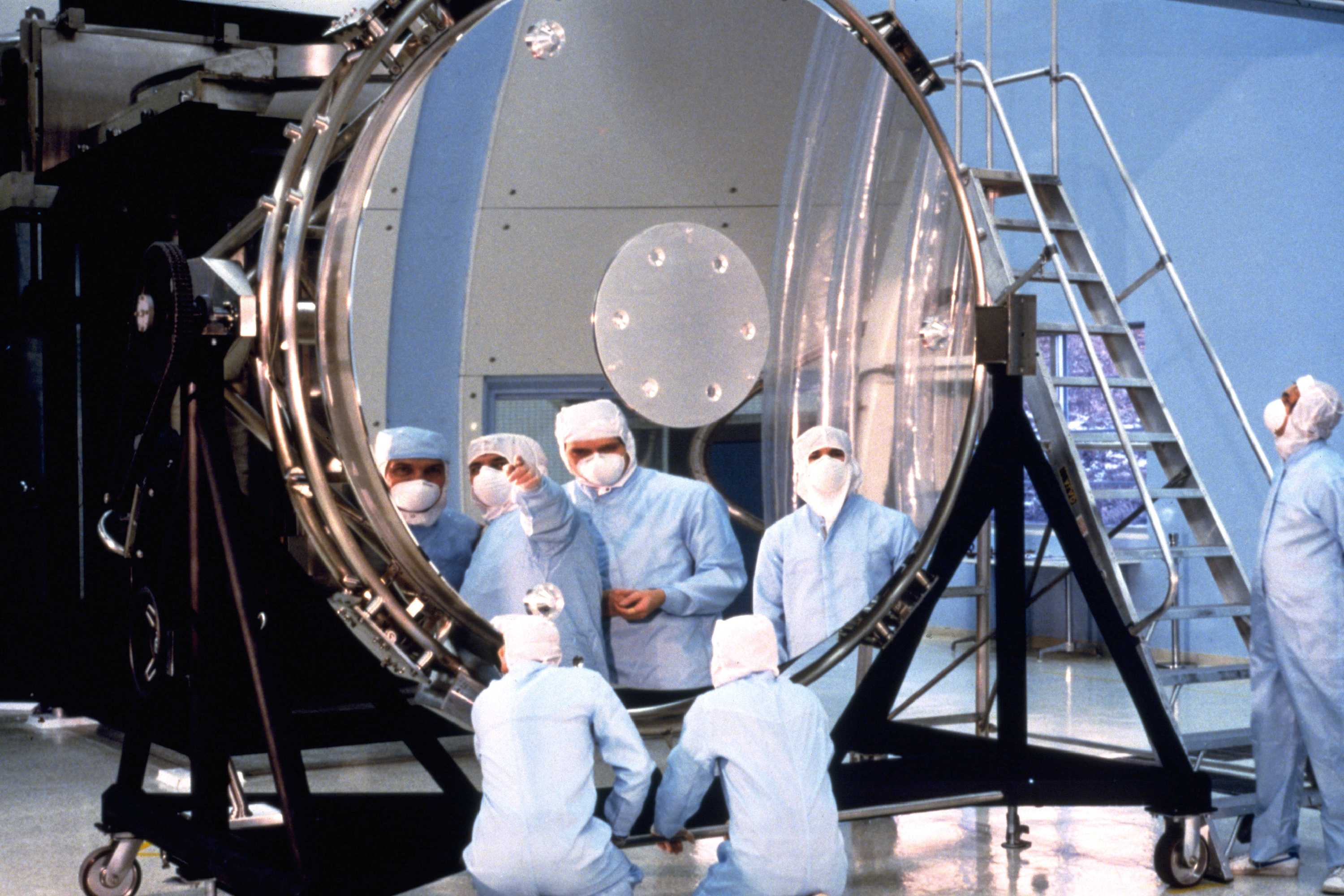
Once its vision was corrected, Hubble was able to capture incredibly detailed images with its powerful OTA. With the focus changes taken into account, Hubble can distinguish astronomical objects in visible light with an angular diameter of a mere 0.05 arcsecond. This resolution is equivalent to discerning the width of a dime from a distance of 86 miles (138 km) and is ten times better than the best typically attained by even larger, ground-based telescopes.
Hubble views the universe with greater precision than Earth-based telescopes because it is not hampered by Earth’s atmosphere. The atmosphere distorts light that travels through it and blurs images taken of outer space. Additionally, the atmosphere blocks some wavelengths of light (like the ultraviolet), which hinders Earth-bound observations. From its position above the atmosphere, and with its powerful optical equipment, Hubble can observe what is unobservable to telescopes on the ground.

